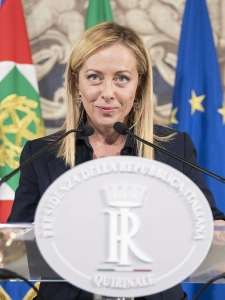Redirecting the flow of merchandise towards Central and Eastern Europe via Romania, more specifically via the Port of Constanţa, would determine substantial savings, in terms of external total costs on a European level (including carbon emissions), according to the "CO2 Reduction" report, issued by the "European Gateways Platform". Directing shipments through Romania, savings could reach 74 million Euros a year, according to a report by "Archirom", a Romanian-Dutch company specializing in logistics and supply chain. In 2020, the forecasted merchandise volume, of 1.47 million TEU (twenty-foot equivalent unit - unit of cargo capacity often used to describe the capacity of container ships and container terminals), will only represent approximately 10% of the total merchandise volume headed for the ECE region. Considering the strategic positioning of Romania and of the port of Constanţa, that volume should be considered as a minimum that can be reached, the press release states.
The total logistic costs for the products that have to be distributed in Central and Eastern Europe indicate the fact that Romania (via Constanţa, as a freight entry point) has a competitive advantage over other ports, such as the port of Koper in Slovenia.
"The port of Constanţa needs to maximize its efficiency, in order to maintain and increase its competitive position. Maritime activities are expected to grow, and the largest growth is expected to occur on the container segment, after the implementation of the < European Gateways Platform > project", said Gerard Kuijs, CEO of "Archicom" says.
The specialists of "Archicom" consider that, by 2025, Romania might attract a volume of freight of approximately 2.1 million TEU, covering commercial and distribution activities, using Romania as a hub. However, these figures only refer to new traffic and new activities, not to existing activities. Freight volume for the years 2011-2012 is not expected to exceed 50,000 TEU in the 2011-2012 period, and with a forecasted increase of approximately 400,000 TEU in 2015.
The forecast assumes that legislative measures supporting trade and logistics would be implemented in 2011. One such example is the postponing of VAT, a topic which is now being debated by the Ministry.
Gerard Kuijs says: "Postponing VAT is a common practice in the EU and represents a delaying of the payment, rather than a cancellation. It is a measure which facilitates the trade involving products which have an unknown final destination (the trend is to position components/parts near the distribution market and to assemble end products at the last minute). When implementing VAT postponement, it is important to ensure that companies will not try to avoid its payment. The introduction of this legislative measure will allow companies to choose the Constanţa route as a gateway for entering the European market. Romania will earn significant amounts in the form of customs fees."


























































